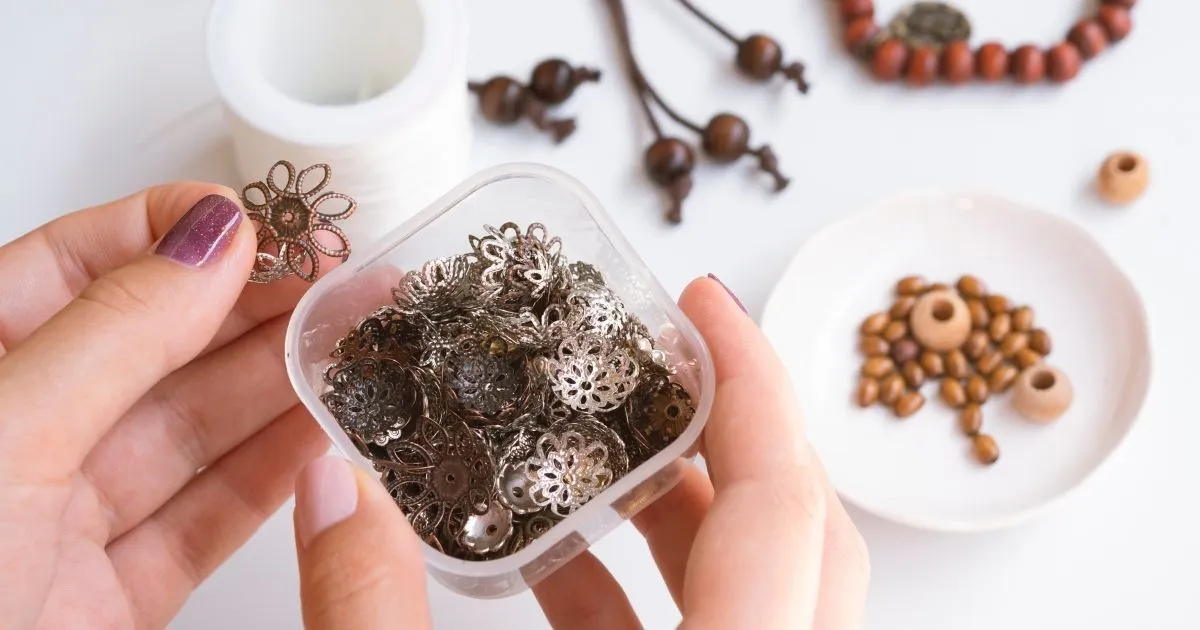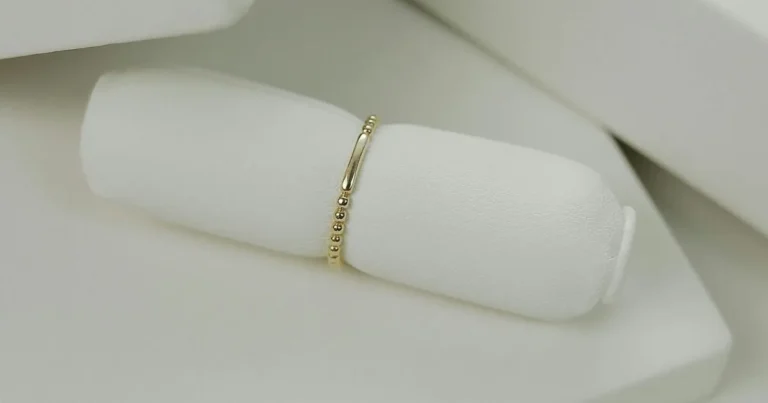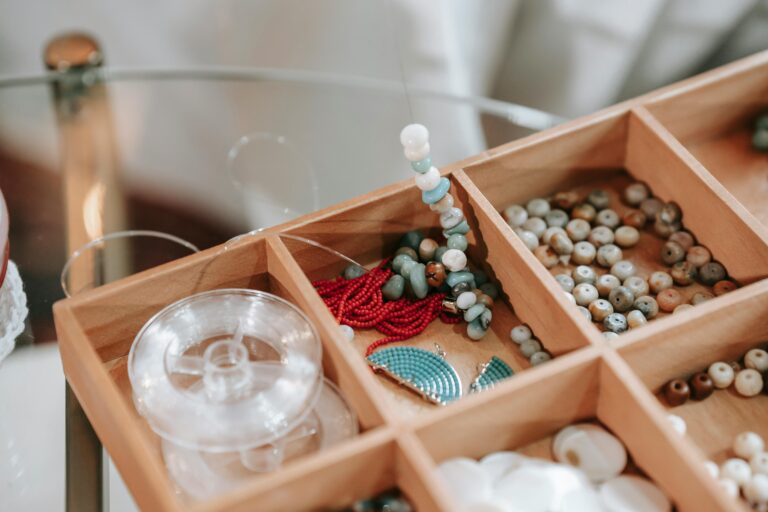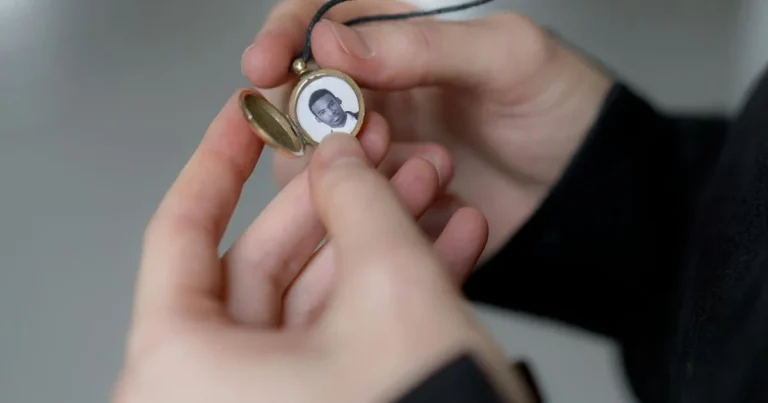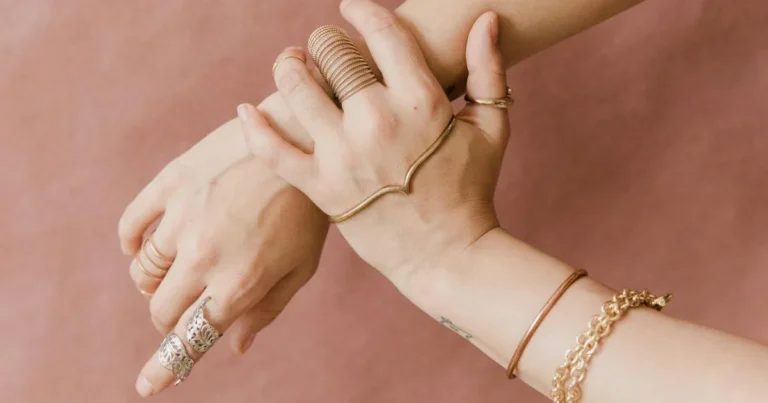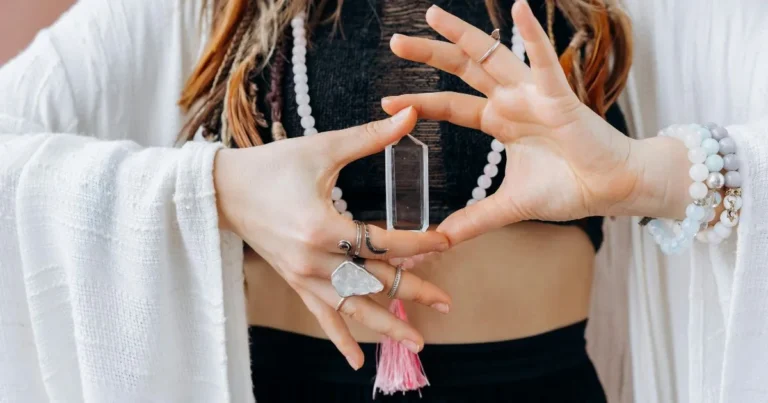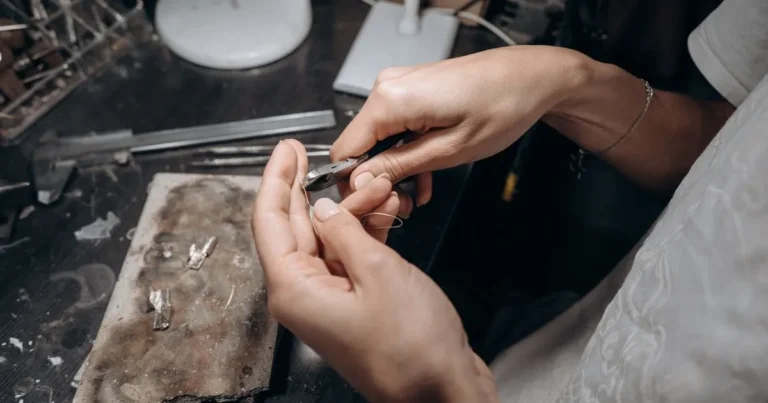Learn Which Types Of Beads Work Best For Different Jewelry-Making Styles, From Beginners to Advanced
Welcome to the world of jewelry making, where creativity knows no bounds. As you start, picking the right beads is key to making stunning pieces. Whether you’re new or skilled, the beads you choose can greatly impact your jewelry design.

The wide range of beads can be confusing, but knowing the different types is essential. From gemstones to seed beads, each has special qualities that can boost your jewelry making.
Key Takeaways
- Understand the different types of beads suitable for various jewelry-making styles.
- Learn how to choose the right beads for your skill level, from beginner to advanced.
- Discover the importance of gemstones in jewelry design.
- Explore the versatility of seed beads in creating intricate designs.
- Enhance your jewelry making skills by selecting the appropriate beads for your projects.
The Fundamentals of Beads in Jewelry Design
Beads are the heart of jewelry making. Knowing their basics is key. Whether you’re new or experienced, understanding beads is crucial for creating beautiful jewelry.
The Difference Between Beads and Gemstones
Beads and gemstones are not the same. Beads are decorative items with a hole in them. Gemstones, on the other hand, are valued for their beauty and rarity. While gemstones can be beads, not all beads are gemstones.
How Material Properties Affect Your Finished Pieces
The material of beads greatly affects your jewelry. For example, delicate beads need extra care. This is because their material can be fragile.
Basic Terminology Every Jewelry Maker Should Know
Knowing jewelry terms is important. Words like “seed beads,” “gemstone beads,” and “findings” are essential. They help you understand and work with different materials.
| Term | Description |
|---|---|
| Seed Beads | Small, uniform beads used for intricate designs |
| Gemstone Beads | Beads made from natural gemstones |
| Findings | Components used to complete jewelry pieces, like clasps and earring backs |
Essential Beads for Beginners: Starting Your Jewelry Journey
The world of jewelry making is vast and exciting. It starts with essential beads that form your craft’s foundation. As a beginner, focus on beads that are affordable and versatile for experimenting with designs.
Glass and Plastic Beads: Affordable and Versatile
Glass and plastic beads are great for beginners. They are affordable and come in many colors and shapes. Glass beads look luxurious but are not expensive. Plastic beads are perfect for fun, colorful pieces.
Best Shapes for First-Time Projects
For your first projects, use round or oval beads. They are easy to work with and fit most designs. Here are some tips for selecting shapes:
- Round beads are versatile and great for simple necklaces and bracelets.
- Oval beads add a unique touch, especially as focal points.
Color Selection Tips for Beginners
Start with a color palette that inspires you. Here are some tips:
“The right color can elevate your jewelry from simple to stunning. Start with colors you love, and don’t be afraid to experiment.”
| Color | Best Used For | Tips |
|---|---|---|
| Bright Colors | Statement pieces | Pair with neutral backgrounds |
| Pastels | Delicate jewelry | Combine with soft metals |
Wooden Beads: Natural Beauty for Simple Designs
Wooden beads add a natural, earthy touch to your jewelry. They’re perfect for bohemian or rustic-themed pieces.
Seed Beads: Mastering Basic Stringing Techniques
Seed beads are tiny and great for intricate designs. They help you master basic stringing techniques. They come in various sizes and colors, making them versatile.
Starting with these essential beads will help you create beautiful jewelry. Your pieces will show your creativity and style.
Gems for Jewelry Making: The Intermediate Level
As you get better at making jewelry, you might want to try more advanced materials. Semi-precious stones and Czech glass are great for this. They open up a lot of creative options for those at the intermediate level.
Semi-Precious Stone Beads and Their Properties
Semi-precious stone beads are loved by many jewelry makers. They bring a unique beauty and depth to designs.
Popular Semi-Precious Stones for Jewelry
Some top picks for semi-precious stones in jewelry are amethyst, quartz, and garnet. Each has its own special qualities and looks.
- Amethyst is known for its rich purple color and is often used in bold pieces.
- Quartz comes in many colors and is valued for its clarity and strength.
- Garnet is a vibrant red stone that adds a touch of class to any piece.
Working with Natural Variations and Imperfections
Working with semi-precious stones can be a bit tricky because of their natural variations and imperfections. But these unique features can also make your jewelry stand out.
Czech Glass and Fire-Polished Beads
Czech glass and fire-polished beads are famous for their quality and detailed designs. They are crafted using old-school methods, which gives them a special shine and finish.
Metal Beads and Findings: Mixing Materials
Metal beads and findings can add a sophisticated touch to your gemstone jewelry. Mixing materials like metal, glass, and stone can lead to interesting and complex designs.
- Use metal findings to connect and secure your beads.
- Try out different metals, like silver, gold, and copper, to find the right match for your beads.
- Think about combining metal beads with other materials for contrasting textures and colors.
Advanced Materials for Expert Jewelry Designers
With a solid foundation in jewelry making, you can now explore advanced materials. These add depth and complexity to your creations. As you refine your skills, sophisticated materials will help you stand out.

Precious Gemstones: From Diamonds to Sapphires
Precious gemstones like diamonds, rubies, and sapphires are highly prized. They add luxury to your jewelry pieces. When working with them, consider their durability and how to set them to maximize their brilliance.
Swarovski Crystals and High-End Glass Components
Swarovski crystals are known for their precision-cut facets, which refract light beautifully. They can elevate your designs to a high-end status. High-end glass components offer a range of colors and finishes, adding sophistication to your jewelry.
Artisan and Handmade Beads: Creating Unique Statements
Artisan and handmade beads add a unique, personal touch to jewelry designs. They can tell a story or convey a specific aesthetic. Two notable types are lampwork glass beads and ceramic and polymer clay art beads.
Lampwork Glass Beads
Lampwork glass beads are crafted using a torch to melt and shape glass. This technique allows for a wide range of colors and patterns, making each bead distinct. You can use them as focal points or accents in your designs.
Ceramic and Polymer Clay Art Beads
Ceramic and polymer clay art beads offer a more tactile, earthy feel. These materials can be molded, textured, and colored to create intricate designs. They are ideal for adding an organic or handmade feel to your jewelry.
By incorporating these advanced materials into your jewelry making, you’ll enhance your designs and expand your creative possibilities. Whether you’re working with precious gemstones, Swarovski crystals, or artisan beads, each material offers unique opportunities for jewelry design inspiration.
Matching Beads to Different Jewelry Pieces
The secret to great jewelry making is knowing how to pick beads for each type of jewelry. This ensures your pieces are not only beautiful but also comfortable and long-lasting. Whether you’re making a necklace, bracelet, earrings, or ring, the right beads are crucial.
Necklace Design: Weight, Length, and Focal Points
When making a necklace, think about the weight and length. Heavy beads need a strong clasp and sturdy chain or cord. The length should fit the wearer and match your style. A standout piece, like a big pendant or bead cluster, adds interest.
Bracelet Considerations: Comfort and Movement
Bracelets must be comfortable. Pick beads that are smooth and won’t rub against the skin. The size and weight of the beads should match the wrist. A good bracelet moves easily without being too loose.
Earring Components: Balance and Proportion
Earrings need balance and proportion to look good. The size and weight of the beads should fit the earlobe. For dangle earrings, a strong hook or finding is needed to hold the beads.
Ring and Pendant Beading Techniques
For rings and pendants, the beading method is key. Techniques like wire wrapping and beading loom work create detailed designs. The type of bead you choose depends on the method and the look you want.
| Jewelry Type | Key Considerations | Bead Selection Tips |
|---|---|---|
| Necklace | Weight, Length, Focal Points | Choose beads that complement the pendant or focal point. Consider the chain or cord strength. |
| Bracelet | Comfort, Movement | Select smooth, skin-friendly beads. Balance size and weight for comfort. |
| Earrings | Balance, Proportion | Match bead weight and size to the earlobe. Use appropriate findings for dangle earrings. |
| Rings/Pendants | Beading Technique | Choose beads suitable for wire wrapping, loom work, or other techniques. Consider the design’s intricacy. |
Understanding these factors and picking the right beads can help you make beautiful, functional, and comfortable jewelry. This way, your designs will meet your goals.
Beads for Specific Jewelry-Making Techniques
Different jewelry-making techniques need specific beads to get the look you want. Knowing which beads to use is key to making beautiful pieces.
Beadweaving: Delicas, Cylinder Beads, and Seed Beads
Beadweaving is a versatile method that uses beads, thread, and a needle. Delicas, cylinder beads, and seed beads are great because they’re all the same size. This makes it easy to create detailed designs.
Wire Wrapping: Selecting Focal Beads and Spacers
Wire wrapping shapes wire around beads for unique jewelry. Choose focal beads that catch the eye and add spacers for texture. The type and shape of the beads greatly affect the design.

Stringing Projects: Creating Patterns and Gradients
Stringing is a simple yet popular technique. It involves threading beads onto a string. To make your stringing projects stand out, mix different beads for patterns and gradients. Using glass, crystal, and gemstone beads adds depth.
Bead Embroidery: Surface Embellishment Materials
Bead embroidery puts beads on fabric with thread or wire. For this, you need beads like seed beads, bugle beads, and sequins. These allow for creative designs on fabric, making bead embroidery unique.
Selecting Quality Beads: What to Look For
Choosing quality beads is more than just picking the prettiest ones. It’s about knowing their durability, value, and where they come from. As you start making jewelry, knowing what to look for in beading supplies can improve your craft. It ensures your pieces last a long time.
Evaluating Bead Quality and Durability
When checking beads, look at their material, how they’re made, and their finish. For example, glass beads differ in quality based on how they’re made. Choose beads with a smooth finish and even color for better quality. The durability of your beads is key to your jewelry lasting.
Understanding Pricing and Value Across Materials
Bead prices vary a lot based on material, brand, and skill. Usually, more expensive beads are made with better materials and skill. But, it’s also smart to do your research and compare prices. This helps you make better choices for your beading supplies.
Ethical Sourcing and Sustainability Considerations
In today’s jewelry making world, ethical sourcing and sustainability matter a lot. Think about the environmental impact of your materials and choose suppliers who care about the planet. Ethical sourcing also means making sure your beads are made fairly, respecting workers and communities.
“The way we make our jewelry should reflect our values, including respect for the environment and the people involved in crafting our materials.”
— Jane Doe, Ethical Jeweler
Where to Purchase: Specialty Shops vs. Online Retailers
Whether you like shopping in bead shops or online, each has its own perks. Shops let you see and touch beads first, while online stores offer more choices and convenience. Think about what you need and prefer when choosing where to buy your beading supplies.
By keeping these points in mind, you can make better choices. This will improve your jewelry making and the quality of your work.
Conclusion: Building Your Bead Collection Strategically
As you keep making jewelry, having a diverse bead collection is key. Learning about different beads opens up a world of design. Glass, plastic, and precious gemstones each bring something special to your creations.
Think about what you want to make and what you like. Whether you’re new or experienced, the right beads make your ideas real. Exploring materials and techniques lets you show your creativity in new ways.
Building your collection thoughtfully prepares you for many projects. With quality beads and your creativity, you’ll make pieces that show your style and inspire others.
FAQ
What are the best beads for beginners to start with?
Beginners can start with glass, plastic, or wooden beads. They are affordable and versatile. You can find them in many shapes, sizes, and colors, perfect for your first projects.
How do I choose the right beads for my jewelry design?
Think about the style and theme of your jewelry. Consider the weight, length, and focal points for necklaces. For bracelets, think about comfort and movement. Earrings need balance and proportion. Also, think about the material and durability of the beads.
What’s the difference between beads and gemstones?
Beads are decorative objects made from various materials. Gemstones are stones prized for their beauty and rarity. While gemstones can be beads, not all beads are gemstones. Gemstones are often more valuable and need more care.
Can I use Swarovski crystals in my jewelry designs?
Yes, Swarovski crystals are a great choice. They are known for their quality and sparkle. They can add luxury to your designs.
How do I evaluate the quality of beads?
Look at the material, craftsmanship, and finish of the beads. Choose beads that are well-made and durable. Also, consider the price, value, and ethical sourcing of the beads.
Where can I buy beads for my jewelry-making projects?
You can find beads at bead shops, online, or craft stores. Online, read reviews and check seller ratings for quality beads. Local bead stores and events can also offer unique beads.
What are some popular jewelry-making techniques that I can try?
Try beadweaving, wire wrapping, stringing, and bead embroidery. Experiment with different techniques to create unique pieces. Classes or online tutorials can help you learn and improve.

